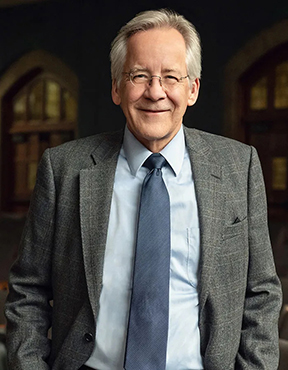
 back to all news
back to all news
SEAS graduate Jeff Minear reflects on environmental law career

Jeff Minear (MS/JD ’82) is a graduate of the University of Michigan School for Environment and Sustainability (SEAS) and Michigan Law. He has had a long career in environmental law, working as an attorney in the U.S. Justice Department’s Environment and Natural Resources Division, as assistant to the solicitor general, and as counselor to Chief Justice John Roberts of the U.S. Supreme Court. He has argued over 50 cases in front of the Court. Minear returned to SEAS as a presenter in the Alumni Master Chat series, part of the Alumni Relations Office’s lifelong learning series for current students and alumni.

Recently, Minear retired from his role as counselor to Chief Justice Roberts and is serving as Distinguished Lecturer from Government at the Georgetown University Law Center. He teaches a class on water law in the era of climate change where he places emphasis on the value of interdisciplinary thinking in practicing law. “I am not teaching it as if I am training water law specialists, but instead based on a broader perspective on how water law is going to have to adapt in the future,” he said.
Minear earned his undergraduate degree in chemical engineering from the University of Utah. During his time there, he enjoyed the science aspect of his education but developed an interest in law and natural resources. After graduating, he worked in the petrochemical industry as a production engineer and with the plan to attend law school. U-M was attractive to Minear because of the joint degree program that was offered between the Law School and SEAS (at the time known as the School of Natural Resources). “It was really the only university that had a program like that,” Minear explained, “and it allowed me to meld different training and experience from my engineering background, SEAS, and the law school together for a career in the environment and natural resources.”
When discussing his career accomplishments, Minear explained that his environmental background has been fundamental to his successful law career. “The issues in the natural resources field require an interdisciplinary approach, and for me it’s been very helpful to look at these issues from an engineering background, a legal background, and from a natural resources policy background,” he reflects. “I had insights that I would not have otherwise had into natural resources policy, and I think it’s very important to have the science and economics background as well as the legal background in looking at these issues.”
During his presentation, Minear referenced three recent environmental cases. These cases illustrated how the Supreme Court approaches environmental questions and demonstrated the value of an interdisciplinary background. These examples also showed how looking at Court decisions through both an environmental and legal lens can provide new insight and perspective.
The first case Minear discussed was West Virginia v. EPA under the Clean Air Act. In that case, the U.S. Environmental Protection Agency adopted an approach to reducing greenhouse gas emissions that required utilities not only to curtail emissions but also to shift to the use of renewable resources. The Court invalidated that approach on the grounds that Congress had not authorized the EPA to regulate utilities by shifting electricity production at the grid level. The Court’s focus was not on the best way to achieve an environmental goal, but rather on the scope of the powers Congress had conferred to the agency.
The second case Minear discussed was Sackett v. EPA, which involved the scope of the EPA’s power to regulate the filling of wetlands. The Court concluded that the EPA’s power was limited to wetlands closely connected to waters that traditionally fell within federal authority. The Court’s focus was not on the ecological importance of wetlands, but rather on the division between federal and state authority over wetlands.
The final case Minear discussed was Loper Bright Enterprises v. Raimondo, which overruled a longstanding judicial rule, known as the Chevron Doctrine, that, when the meaning of regulatory statute is uncertain, courts should defer to an agency’s reasonable interpretation. Like West Virginia and Sackett, the Court’s focus was not on environmental policy, but rather on a distinctly legal issue—in this case, whether courts or agencies should have the authority to interpret ambiguous statutes.
Minear picked these cases because “they demonstrate how the Court views its role not as setting environmental policy but rather as deciding who in the government should make these decisions.” He noted, “People who are attracted to programs like SEAS care deeply, I would even say passionately, about the natural world and the future of the environment. They naturally view the Supreme Court cases involving environmental issues through that lens and ask what the real-world consequences of these decisions are, but justices are trained as lawyers and view these issues through a very different perspective.”
At the end of this conversation, Minear reflected on the many years he has spent working in environmental law and encouraged SEAS students interested in careers in environmental law to step up to future challenges. “It is such a great program that SEAS is offering, and it's so important at this time. It has been inspiring to see how people have evolved in this field, and I am so excited to see future progress.”

